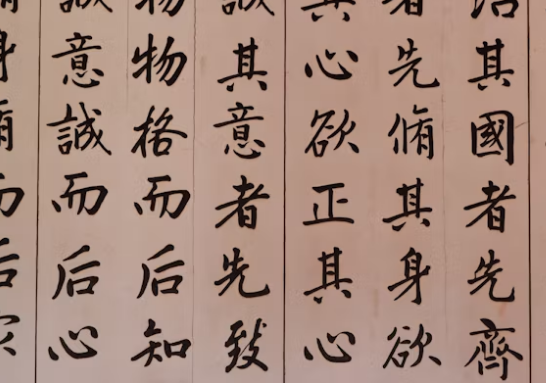
Global Typing
Share
When we think of typing, most of us picture the familiar QWERTY keyboard designed for English. But around the world, people write in hundreds of languages, many of which have completely different scripts, alphabets, or even typing systems. How do speakers of Arabic, Chinese, and other languages manage to type efficiently? The answer is a fascinating mix of adapted keyboards, smart software, and linguistic innovation.
Typing in Arabic: A Right-to-Left Challenge
Arabic presents a unique typing challenge because it is written from right to left, unlike English and most Western languages. To accommodate this, Arabic keyboards are specially designed with the Arabic script arranged to mirror the QWERTY layout somewhat, but modified for the character set.
Arabic letters change form depending on their position in a word (beginning, middle, end, or isolated), but Arabic keyboards typically have only one basic form for each letter. It is the job of the software to automatically adjust the appearance of each letter based on its context in the word. This makes typing much faster and less complicated than it might seem at first glance.
The keyboard itself often retains the QWERTY layout underneath the Arabic letters, meaning that bilingual users can easily switch between English and Arabic without changing keyboards. In fact, many keyboards sold in Arabic-speaking countries have both Latin and Arabic characters printed on the keys.
Furthermore, modern operating systems support "bi-directional" text input, allowing the user to type Arabic from right to left while seamlessly mixing in English or numbers from left to right within the same document.
Typing in Chinese: Mastering Thousands of Characters
Unlike Arabic, Chinese presents a very different kind of challenge: an enormous character set. Mandarin Chinese, for example, uses thousands of characters, making a keyboard with a separate key for each one impractical.
Instead of having thousands of keys, Chinese typists use input methods based on phonetic or structural systems. The most common is Pinyin, a romanization system that represents Chinese pronunciation using Latin letters.
Here’s how it works: to type the Chinese word for "hello" (你好), a user would type "nihao" on a standard QWERTY keyboard. The software then displays a list of characters that match that pronunciation, and the user selects the correct one. Advanced predictive text and learning algorithms mean that, over time, the software gets better at guessing the correct characters with fewer keystrokes.
Other input methods, like Wubi, rely on the shape and structure of the characters rather than pronunciation. Wubi is faster for trained users but harder to learn initially. It maps character components to different keys, allowing rapid typing for those who master the system.
Other Languages, Other Solutions
Languages like Russian, Greek, and Hebrew have their own specialized keyboards where the characters are mapped to fit the basic layout of the QWERTY system, sometimes with slight reordering to accommodate frequency of use.
In some cases, typing adaptations go beyond just changing the keyboard. Korean, for example, uses a syllabic writing system called Hangul, which is perfectly suited to keyboard input. Korean keyboards allow users to type simple consonant and vowel combinations that automatically combine into syllabic blocks.
Japanese typists often use systems similar to the Chinese Pinyin method, typing words phonetically in Latin letters (Romaji) and then selecting the correct kanji, hiragana, or katakana characters from a list.
Technology Bridging the Gaps
Advances in predictive text, voice recognition, and smart keyboards have made multilingual typing faster and more accurate. Mobile devices often offer dynamic keyboards that change layout depending on the language in use, and predictive typing systems can now handle code-switching—seamlessly switching between languages mid-sentence.
The diversity of typing methods around the world shows how flexible and adaptive technology can be. From right-to-left scripts to phonetic input for thousands of characters, the story of global typing is a perfect example of how human creativity and technology work together to overcome complex challenges.
Would you also like a short, punchy version of this blog if you plan to post it as a social media teaser?
